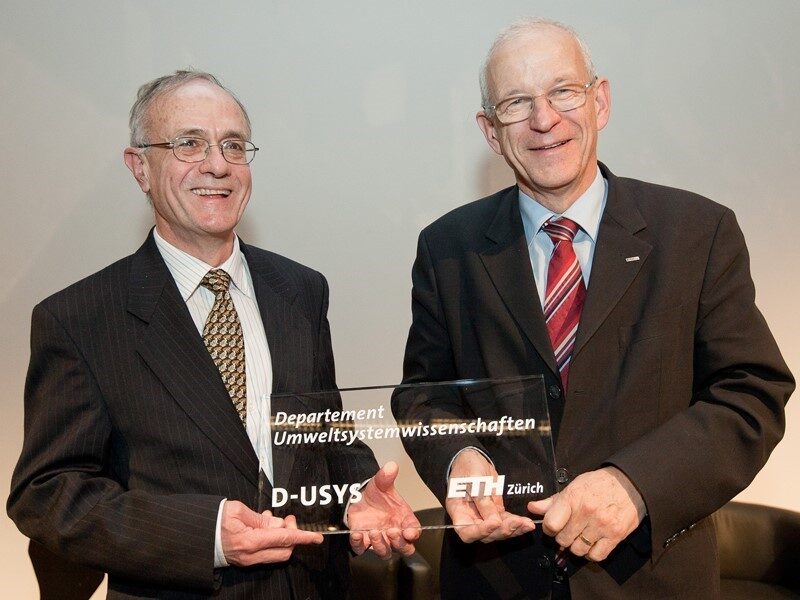The launch of D-USYS
And the end of the D-AGRL
The decision that Agricultural and Food Sciences should no longer be united in one department was not taken lightly. However, due to the declining number of students in agricultural sciences, it seemed unavoidable. The positive development of the two newly created departments today shows that their foundation was the right thing to do and created many new synergies.
It was not an easy step: On the first of January 2012, the Institute of Agricultural Sciences merged with the Department of Environmental Sciences (D-UWIS) to form the newly founded Department of Environmental Systems Science (D-USYS). After 23 years of existence, the D-AGRL was dissolved. The new department D-USYS aims to approach topics in Environmental and Agricultural Sciences more systemically and in a holistic way.
At the same time, the Food Sciences were split off from Agricultural Sciences. Together with Neurosciences, Movement Sciences and parts of Biomedical Engineering, the Institute of Food, Nutrition and Health (IFNH) became part of the newly created Department of Health Sciences and Technology (D-HEST).

No change without criticism
The reorganisation was, among other things, a reaction to the student numbers. While student numbers in Agricultural Sciences had been declining since the mid-1980s, demand in Food Sciences had been rising constantly since the 1970s.
Nevertheless, the Swiss Farmers' Union and SVIAL showed little understanding for this decision. The then president of the farmers' association, Hans-Jörg Walter, was mainly bothered by the fact that Agricultural Sciences were no longer part of the department's name. He feared that the only university training option for agriculture would lose its reputation and that even fewer students would opt for this training.
On the other hand, Michel Roux, the SVIAL's executive director at the time, was in favour of the stronger connection to Environmental Sciences but criticised the timing of the restructuring. The current food shortage and the strong population growth made cooperation between the two disciplines indispensable. A separation would risk a development of research in the wrong direction.
The concern that the university programme of Agricultural Sciences would lose its attractiveness with the merger was proven unfounded by the constant number of new enrolments from the 2010s onwards.
The disciplines remain connected
For students, little changed in the curriculum for Agricultural and Food Sciences with this restructuring. The close connection between Agricultural and Food sciences is still clearly evident today in the curriculum of the two degree programmes. For example, in the first year of study, students attend the same lectures with only one exception, and in the third semester the same basic lectures are marked as compulsory courses in the curriculum. Up to the Master's degree, there are lectures that are attended jointly by students from both degree programmes.
The two departments cover different aspects of the food system. Looking back over a decade, it can be said that the establishment of D-USYS and D-HEST is the necessary foundation for a science-based research approach to sustainable food and nutrition security and the resilience of global and local food systems. In addition, the World Food System Center (WFSC), founded in 2011, connects the two disciplines in joint research projects along the entire food value chain.